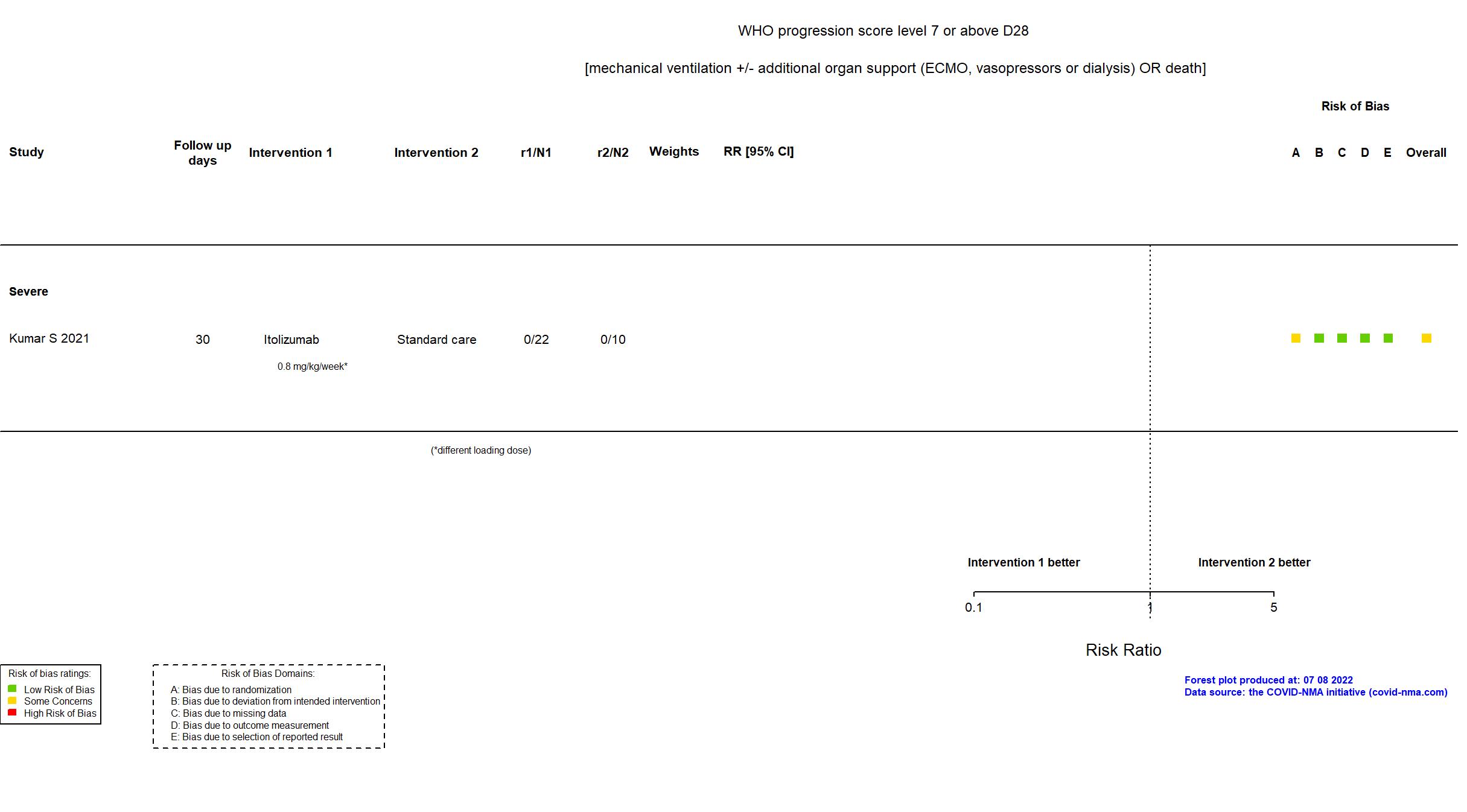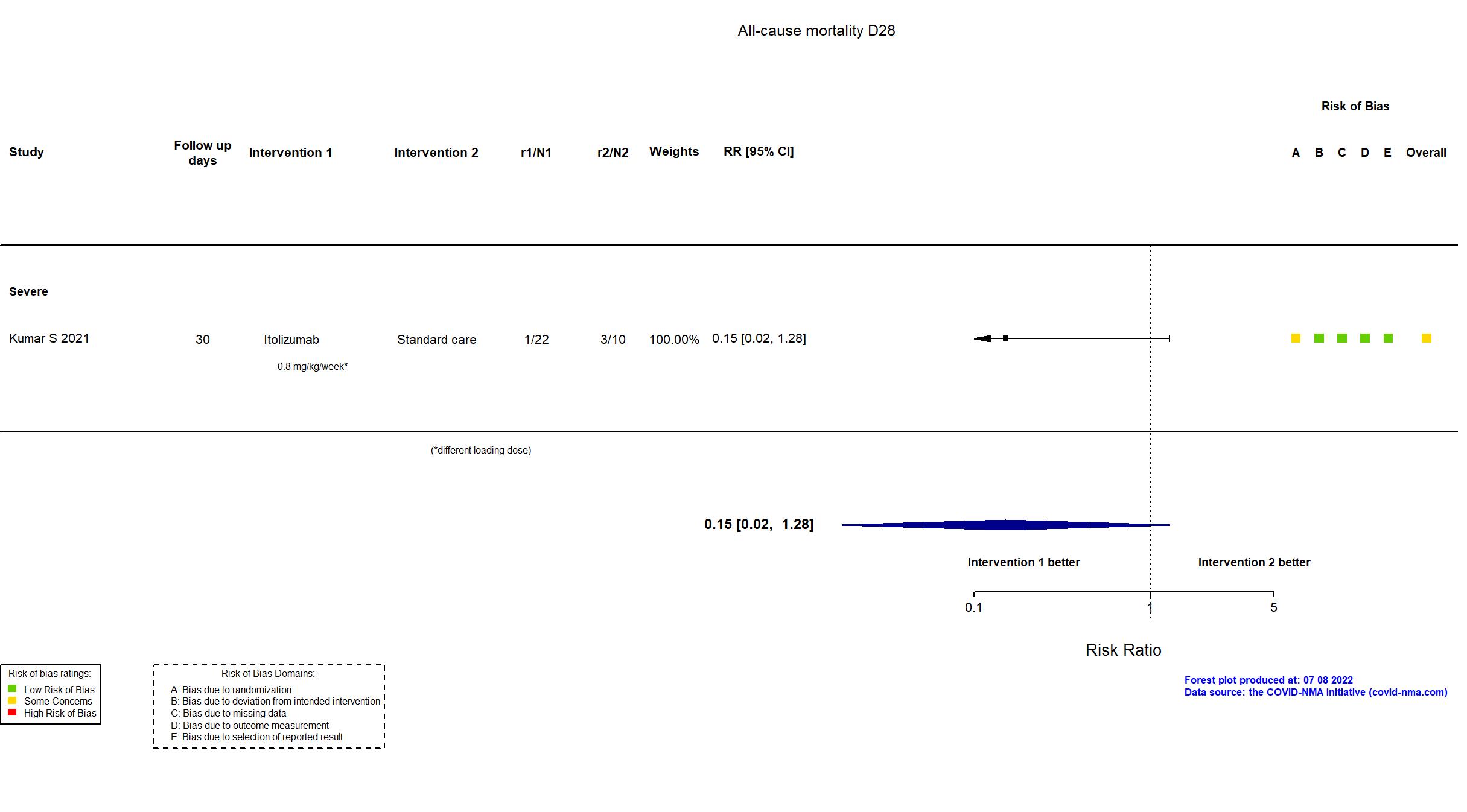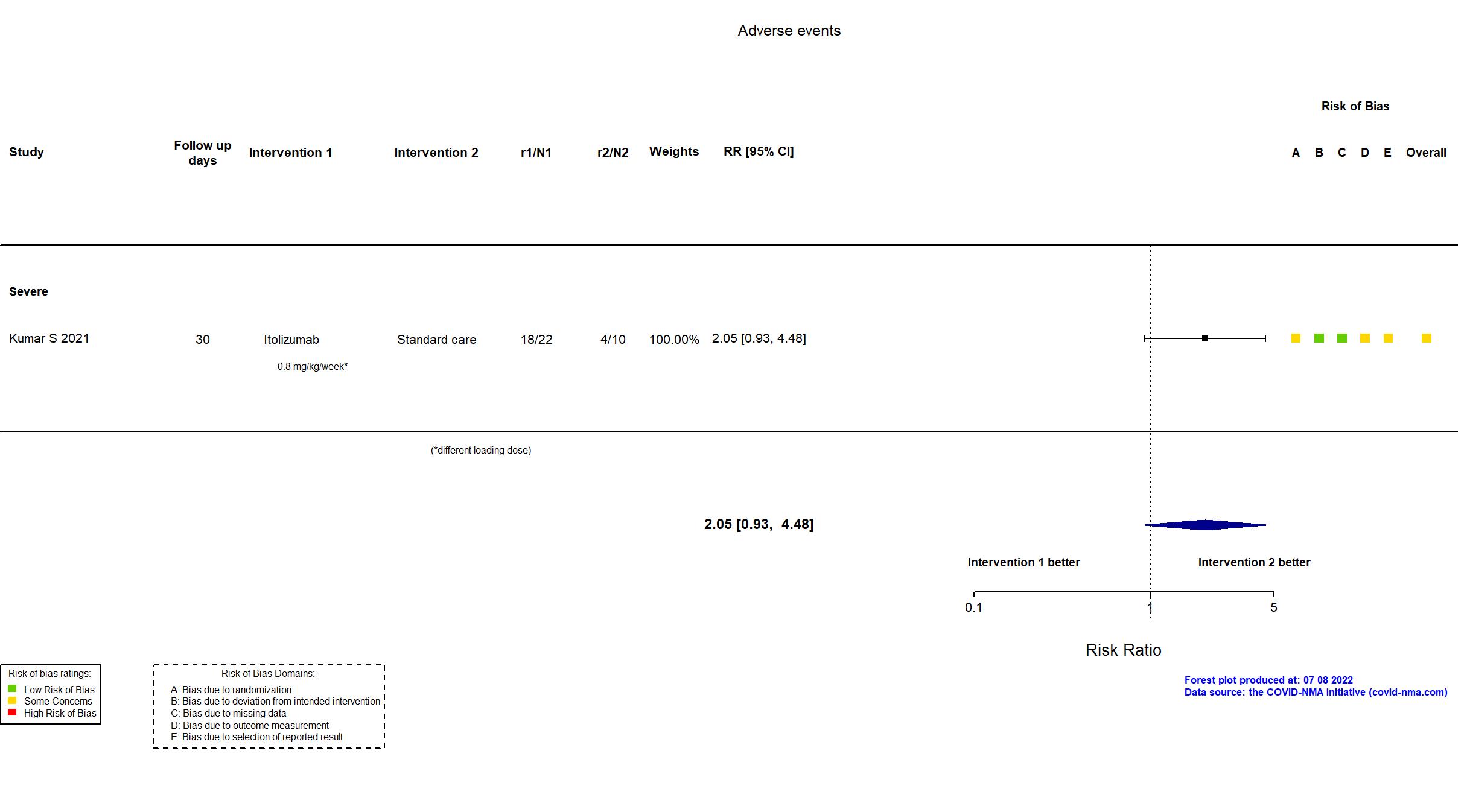Itolizumab vs Standard care (RCT)
Hospitalized patients
FOREST PLOTS -2022-07-08







Trial CTRI/2020/05/024959; NCT04475588
Publication Kumar S, Exp Opin Biol Ther (2021) (published paper)
Dates: 2020-05-02 to 2020-07-07
Funding: Private (Biocon Biologics India Limited)
Conflict of interest: Yes
| Methods | |
| RCT Blinding: Unblinded | |
| Location :
Multicenter / India Follow-up duration (days): 30 | |
| Inclusion criteria |
|
| Exclusion criteria |
|
| Interventions | |
| Treatment
Itolizumab 1.6 mg/kg IV infusion followed by 0.8 mg/kg once a week |
|
| Control
Standard care | |
| Participants | |
| Randomized participants : Standard care=10 Itolizumab=22 | |
| Characteristics of participants N= 32 Mean age : NR 26 males Severity : Mild: n=0 / Moderate: n=0 / Severe: n=30 Critical: n=0 | |
| Primary outcome | |
| In the register 1. One month mortality rate; 2. Proportion of pts with deterioration of lung function as measured by: Stable SpO2 PaO2 without increasing FiO2 3. Reduction of endotracheal intubation rate, measured as rate of pts needing intubation; 4. Reduction in proportion of pts who need: NIV IMV HFNO 5. Time of duration of mechanical ventilation, for pts needing intubation 6. Change in inflammatory markers CRP, d-Dimer, ferritin | |
| In the report 1. Reduction in mortality one month after randomization 2. Reduction in the proportion of patients with deteriorating lung functions, as measured by: a. Stable SpO2 without increasing FiO2 b. Stable PaO2 without increasing FiO2 3. Reduction in proportion of patients who needed non-invasive ventilation, invasive mechanical ventilation/endotracheal intubation, and high flow nasal oxygen 4. Reduction in inflammatory markers: Ferritin, D-dimer, LDH, CRP. | |
| Documents avalaible |
Protocol Yes. In English Statistical plan Yes Data-sharing willing stated in the publication: Not reported |
| Risk of bias Overall The overall risk of bias reported in the table corresponds to the highest risk of bias for the outcomes assessed for the systematic review |
Some concerns |
| General comment | In addition to the pre-print article,study report, trial registry and the reply provided by authors were used in data extraction and risk of bias assessment. Neither study protocol nor statistical analysis plan was available. The study achieved the target sample size prespecified in the registry. There were no substantive differences between the registry and the article in population, procedures or outcomes. There was a difference between the optional follow-on dosing regimen in the article (0.8 mg/kg dose weekly regimen) and the registry (1.6 mg/kg dose every 2 weeks or 0.8 mg/kg weekly). The study achieved its pre-stated sample size. The randomization process was unconventional, and may have involved selection bias. Safety was monitored in the first five patients, with them being infused and monitored for 24-48 hours prior to infusing the next patient. Once all five patients were infused in this staggered manner, subsequent patients were enrolled such that study had patients randomized in a 2:1 ratio. Patients who were randomized, but did not receive the full infusion, were considered unevaluable and the same randomization code was used for allocation of the next patient enrolled by the study site. On 12th of February,2021, we received additional information from authors on this study. This study was updated with data from contact with authors on April 07th, 2021. On 14th of April, 2021, this study was updated based on the published report. |